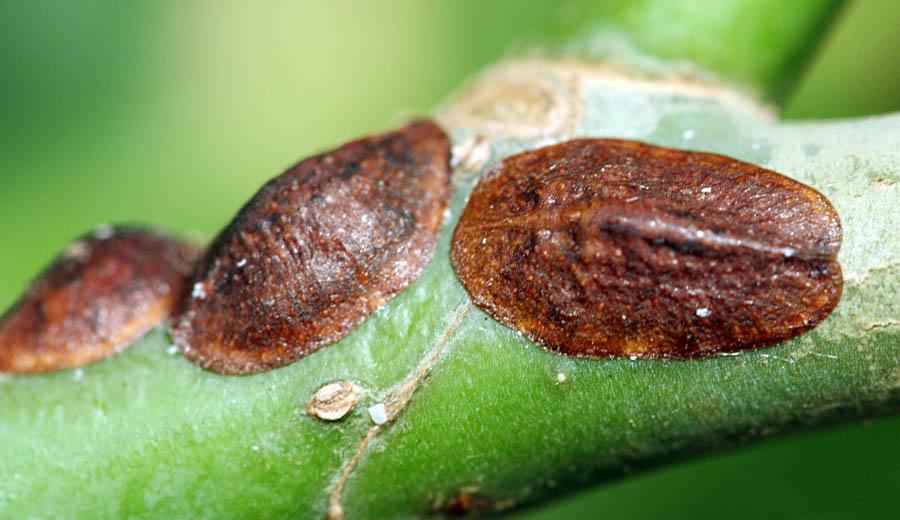News
Methods of combating the hazelnut scale insect, commonly encountered in hazelnut orchards

The hazelnut scale insect or false acacia scale insect (Parthenolecanium corni) is a polyphagous pest and is widespread in many countries across the Eurasian continent. However, this pest does not carry a quarantine status in Azerbaijan. In Israel, it was added to the list of harmful organisms under quarantine measures since 2009. This pest has been identified in hazelnut orchards located in the Qakh and Zaqatala regions.
Although the hazelnut scale insect primarily causes damage to oaks, maples, and grapes, it also affects hazelnuts, chestnuts, pears, apples, plums, peaches, cherries, almonds, and other fruit plants, including various decorative and broad-leaved forest plants (especially the false acacia tree).
The mature female of the pest has a hemispherical body shape. During its development stages, the body is initially dark brown, then changes to a light brown color. The length of the females, along with the body, ranges from 3 to 6.5 mm, with a width of 2.4 mm. Male individuals, on the other hand, are brown and have a pair of wings.
The female individuals of the pest spend the winter months in the young branches and buds of trees during the second-year nymphal stage. In summer, they begin feeding and growing when the buds open. After mating, females start laying eggs at the end of April to early May. The underside of the scales is covered with eggs until June. On average, a female individual lays 2070 eggs. Starting from early June, mobile nymphs emerge from the eggs. These nymphs move to leaves, especially the underside of leaves along the veins, and feed on the plant sap. Nymphs feed on leaves for about 75-80 days, then move to branches and twigs during the second-year stage. This process continues until the middle of November. Nymphs feeding on branches and twigs during the second-year stage enter winter diapause. Depending on climatic conditions, it is known to have 2-3 generations per year.
Female individuals live in groups. They play a significant role in the dispersal of small nymphs by wind.
The hazelnut scale insect causes significant damage by feeding on leaves, branches, and stems with plant sap. In densely populated fruit orchards, they contribute to the development of saprophytic fungi due to the sweet substances they excrete. As a result, leaves, stems, and fruits are covered with dark-colored sooty mold. The nymphs and adult individuals of the pest weaken plants through feeding on stems and leaves, leading to reduced productivity and quality of the crops. During heavy infestations, they can even cause drying out of the plants.
Chemical control measures against this pest should be carried out considering their phenology. When general infestations are low in the orchard, the infested plant parts should be cut and removed from the field and then burned. Monitoring activities conducted in May and June involve examining 3 young nymphs (30 nymphs) from 10 different locations in the orchard. When an average of 5 live individuals is found in selected nymphs, a decision is made to implement chemical control measures. It's important to note that the timing of chemical control in the fight against scale insects is crucial. Chemical control should be performed during the mobile nymph stages, particularly during the first and second-year nymph stages (June).
Other news

On the dates of December 9-10, a "From Village to City" weekend fair will be organized.

Agricultural insurance advantages were discussed in a meeting held in Saatli

Educational Partnership with Azerbaijan’s First Animal Hospital: Collaboration Between Hasvet and Khazar University

AVC Agro and Boehringer Ingelheim Held a Joint Conference on Poultry Vaccines on June 25-26, 2025

